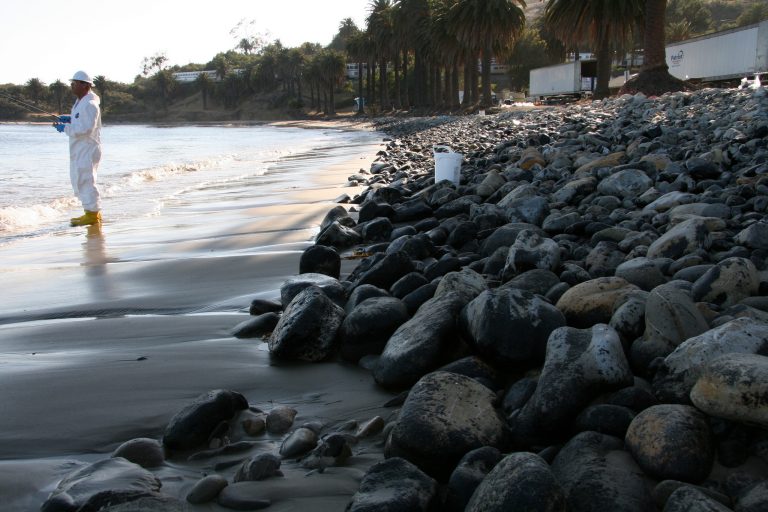
Jessica Gang
Almost two and a half years after the Refugio oil spill, the County of Santa Barbara has filed a lawsuit against the Plains All-American Pipeline accusing the company of refusing to compensate the county for $13 million in lost property tax revenues as a result of the oil spill. The County of Santa Barbara filed the lawsuit on Dec. 29, 2017, two weeks after Plains All-American Pipeline notified county officials it would not move to recover any lost property taxes.
Despite the fact that the Refugio oil spill happened in May 2015, the county claims that the property tax damages are ongoing. City Counsel Michael C. Ghizzoni said the “oil company has refused to compensate the county for the loss of property tax revenues,” in a statement published by the Santa Barbara Independent on Jan. 11.
On May 19, 2015, a 10.6 mile pipeline owned by the Houston-based company Plains All-American Pipeline ruptured, sending up to 140,000 gallons of crude oil into the Pacific Ocean. Because the pipeline ran adjacent to Highway 101, crude oil spilled onto seven miles of Santa Barbara coastline, an area that included Refugio State Beach and parts of El Capitán State Beach. Tar from the spill was also found as far away as Manhattan Beach in Los Angeles.
The county’s current lawsuit is the most recent in a long line of legal actions that have been taken against Plains All-American Pipeline, almost all of which stem from the 2015 oil spill.
Santa Barbara County charged Plains with 46 criminal counts in May 2016, including knowingly discharging a pollutant in state waters, which is a felony. The criminal case is ongoing, but Plains has also been hit by a slew of lawsuits, including one by Venoco, a crude oil producer supplied by the Plains pipeline.
Venoco filed for bankruptcy in March 2016, suing Plains for $12.4 million two weeks later. Venoco claimed they were unable to produce oil and natural gases because of the ruptured pipeline. In April 2017, Plains was also hit by a federal class-action lawsuit by fishermen, who say the oil spill impeded their profits and negatively impacted their way of life.
Two years after the Refugio spill, the future of oil drilling in Santa Barbara is murky. Plains submitted plans to replace the Santa Barbara pipeline, promising that the company will take preventative measures to ensure the new and improved pipeline will not fall victim to the same structural imperfections that caused the pipeline to rupture in 2015.
In an email sent to Noozhawk on Aug. 9, 2017, Joan Hartmann, the Third District County Supervisor for Santa Barbara County, said it is fully expected that “Plains All American will incorporate state-of-the-art safety features and practices into the design and operation of the new pipeline and that the county will maintain a significant role in working with the State Fire Marshal…to assure the integrity of this proposed project,” in order to guarantee that a disaster like the 2015 spill will never again occur.
Regardless of the final verdict in the many legal proceedings that Plains is part of, it is clear that the Refugio oil spill had a significant impact on future oil drilling in Santa Barbara County. In an interview with the Los Angeles Times immediately after the spill, Phyllis Grifman, the associate director of the USC Sea Grant Program, said that while visible oil will be cleaned, “there will be organisms that take up oil…that percolates down into the sand and sediment” which could result in “long-term effects.”
In order to accommodate an extensive response and relief effort, Refugio State Beach shut down for over a month after the spill. The effect of the oil spill on marine life was also extreme, as the waters off of Refugio are frequented by many rare seabirds as well as migrating whales, sea lions, and dolphins. A report by the National Oceanic and Atmospheric Administration immediately after the oil spill focused on birds alone and found that 65 birds were collected alive and 202 were found dead, with the number of estimated dead still pending.










